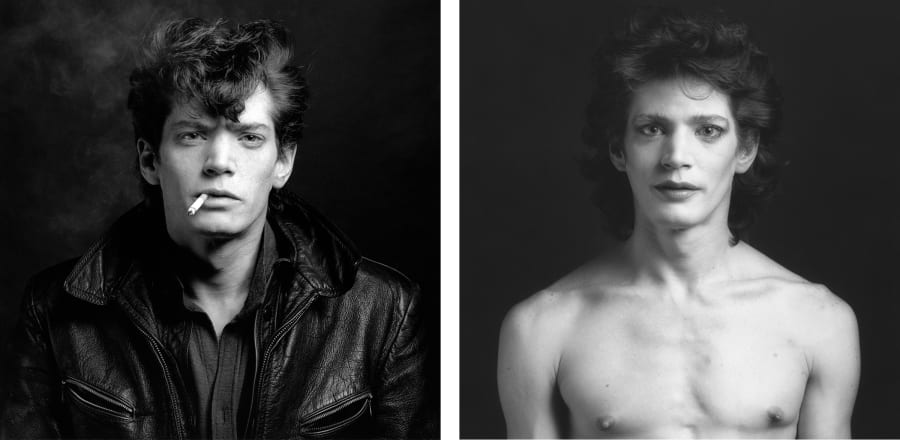During the spring of 2023, midway along a wall in the lower gallery of the Palais de Tokyo in Paris, sat a pale-yellow door. Although it had a sleek metal handle, it did not open. From the other side, visitors could hear a cacophony of footsteps, voices, trolley wheels, and ringing telephones, as flashes of red, green, and blue light shone through a small frosted-glass panel, hinting at some unknown, behind-the-scenes commotion.
A simple yet striking installation by Benoît Piéron, Le Rayon (2023) – shown as part of the group exhibition ‘Exposé·es. D’après Ce que le sida m’a fait’ (‘Exposed: What AIDS Did to Me’) – re-created an experience all-too-familiar to the artist from his many stays in hospital: being simultaneously surrounded by, yet excluded from, frantic activity. As frustrating as such a peripheral position might be to some, Piéron speaks of waiting rooms as his ‘ideal studios’ and regularly makes them the focus of his installations.
Shortlisted for the Fondation Pernod Ricard Prize in 2023, Piéron’s installation Horizones (2022) – replete with potted plants surmounted by IV bags, a privacy screen, and a rotating postcard display stand – evoked the uncanny ambiance of a doctor’s office. As with his work for the Palais de Tokyo, Horizones places the viewer in an uncomfortable, intermediate position – neither completely excluded from nor party to the action – and transforms liminal sites into privileged spaces in which to deploy his art.
In recent years, Piéron’s works have garnered increasing attention: He has exhibited at the inaugural edition of Paris+ par Art Basel with Sultana and his work was on display at the Bourse de Commerce in 2023; he is also a Pinault Collection artist-in-residence in Lens, has been short-listed for the Carta Bianca Prize in 2022, and exhibited at the Liverpool Biennial and Dunkirk Triennale in 2023. This busy schedule underscores the broad appeal of his practice, in which the intimate experience of illness has emerged as a central theme.
But, make no mistake: In his own words, Piéron’s work ‘is less about illness and more about survival.’ Born with meningitis in 1983, Piéron was afflicted with leukemia at the age of three. From a very early age, hospitals became his second home, soon more familiar than his own house. As a child, he became accustomed to ‘journeying around his room’ – to paraphrase the title of Xavier de Maistre’s 1794 book, from which Piéron quotes fondly – exercising his imagination in the medical settings from which he could not escape.
Protective environments became one of the key motifs of Piéron’s work from the moment he graduated from the Académie des Beaux-Arts, Paris, in 2008. It was also then that, as a devoted reader of Henry David Thoreau’s Walden (1854) and inspired by a passion for landscape, the artist built his first cabin. A few years later, during his residency at the Fondation d’entreprise Hermès, he drew from the overflowing fabrics of the couture house’s stockrooms to sew a tent and mount it on a four-poster bed formed from reels of colored thread (Le Lit, The Bed, 2011).
The goal of these works is clear: By using materials and techniques associated with domesticity, Piéron strived to fuse the richness of the external world with his own private universe. Yet, it wasn’t until recently that the artist, afflicted with a new cancer and also suffering from myopathy, finally imbued these environments connoting shelter with the more intimate details of his medical history. From that moment onward, he began to speak of the ailments that have afflicted him as his ‘pet illnesses’ – a phrase that lends an almost endearing quality to his harsh reality.
Unflinching yet sanguine, Piéron’s work shuns the misery so often linked to sickness to focus on its lighter side. This begins with his characteristic color palette composed of pale yellows, sky blues, lilacs, and pinks. ‘It feels like my flesh is in those colors,’ he says wryly, characterizing this range of pastels as his ‘heraldic colors’ and using them in patchwork on mattresses, armchairs, and draperies. But, beneath the childlike, whimsical appearance of these chromatic assemblages lies the harsh reality of their source material: used hospital sheets, sometimes stained with patients’ blood and other secretions. By reappropriating these emotionally charged fabrics, Piéron invests them with a happier future in works that supplant the often clinical and distressing atmosphere of hospitals with a sense of fun and even celebration.
During the summer of 2022, in his show ‘Illness Shower’, he underscored this ambiguity by filling Galerie Sultana in Arles with pennant flags, pillows, and comforters – remnants of an imaginary pajama party or a sick child’s hospital stay. More recently, he has been making ribbons, batons, and juggling balls for upcoming performances featuring gymnasts and majorettes.
Increasingly, Piéron has been incorporating elements from his childhood into his works: Here and there are carefully knotted scoubidou strings and diligently completed crossword puzzles – antidotes to the ennui and inertia of waiting. And then, of course, there are his stuffed-toy bats, such as Peluches Psychopompes (2022) – leitmotifs that he has affectionately named Monique, in homage to the writer Monique Wittig. This mascot – a ‘transitional object’ in the truest sense of pediatrician and psychoanalyst Donald Winnicott’s 1953 definition of the items to which young children become intensely attached – is, to him, a ‘kind of happy incarnation of illness,’ reminding him of the merry moments when he and his hospital mates used to play together with little vampire puppets.
Forced since earliest childhood to accept mortality, the artist has developed an art of the ‘psychopomp’ – as he called it in a conversation with curator François Piron – a ‘pocket River Styx’ in which he himself is Charon, the ferryman to the underworld. Rather than a terrifying end to the journey, death becomes an illuminating step along the way that must be serenely accepted in order to better understand the torments of the world of the living.
‘The dead are bosses with whom you cannot negotiate,’ Piéron solemnly pronounced, in reference to the scandal in which hundreds of French children were injected with HIV-contaminated blood between 1984 and 1985. Having received transfusions during that same period, the artist still cannot comprehend the luck of the draw that condemned his fellow patients to contract the disease while he himself was spared. Haunted by this feeling of injustice, he has given his artistic practice a new goal over the years: to embrace the political implications of his own body in order to conceive a collective poetics of alternative bodies – bodies that are nearly invisible in our society, and even less visible in works of art.
As his participation in ‘Exposé·es’ at the Palais de Tokyo implies, he works in the same vein as some of the artists from a previous generation included in the show, for whom illness, dissent, and marginality became driving forces in the creation of a new artistic language. In La Rouge à Lèvres (Lipstick, 2015) – made of Piéron’s own blood – one finds echoes of Michel Journiac’s Messe pour un corps (Mass for a Body, 1969), in which the artist offered the audience human blood sausage. In his affinity for membranes – doors, sheets, screens – one sees reminiscences of Felix Gonzalez-Torres’s curtains, such as Untitled (Golden) (1995), spaces of transition towards a new interpretative framework for the world. The recurring presence of plants, meanwhile, is a direct reference to British filmmaker and artist Derek Jarman’s famous garden at Prospect Cottage in Kent.
Like those artists, Piéron sees himself as a ‘pathogenic agent of art’ poised to contaminate its very structures and economies. To maintain a fully independent practice, he rejects all the government subsidies to which he is entitled and, when planning his exhibitions, asks curators and institutions to factor into their budgets the financial implications that pertain to his medical condition.
While exploring the idea of a pornographic film made in a hospital to platform the sexuality of sick bodies, the artist has shifted his attention to the still-contentious themes of police violence and rape culture. These works tend towards a single objective: to celebrate all bodies – those indispensable tools of resistance against the violence of the world – and how they become yet more powerful when wielded with flamboyance and joy. For Piéron, even pillboxes contain glitter.
Benoît Piéron is represented by Sultana (Paris, Arles).
Benoît Piéron
‘Poudre de riz’
Sultana, Paris
March 2 - April 20, 2024
Matthieu Jacquet is a journalist and art critic based in Paris. He writes about art and fashion for Numéro and Numéro art.
English translation: Peter Behrman de Sinety.
All photos and videos by Aude Carleton for Paris+ par Art Basel, taken at the Pinault Collection's residency in Lens, France.
First published on May 26, 2023. Republished on March 1, 2024.


